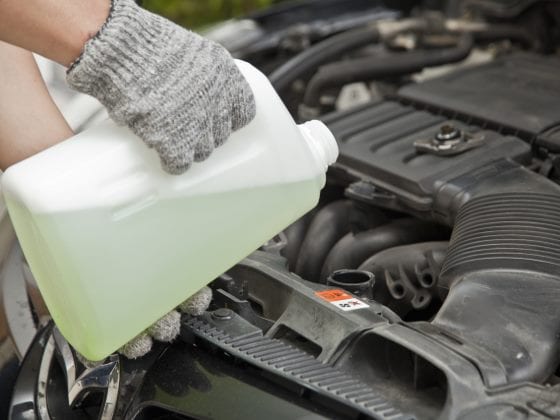As summertime approaches, Wayne’s Automotive Center, your friendly Reno and Sparks Auto Care Center, would like to remind drivers of the ways that rising temperatures can cause trouble for your vehicle. You don’t want to be one of the over eight million drivers stranded on the roadside each year.
Have You Performed A Coolant Check?

During the summer months, the engine of your vehicle has to work extra hard to keep itself cool. The vehicle engine is not responsible for cooling itself, but it is the job of the cooling system to keep things in check. The chance of engine damage rises significantly when extreme temperatures are present. The cooling system also takes advantage of additional additives in the cooling fluid to help prevent early corrosion and protect internal engine parts from premature damage. If things are not maintained and ready for the rise in summer temperatures, you may be in for a surprise in the form of a boiling, steam spewing radiator. An overheated car is always and unwelcomed experience when trying to get somewhere and can immediately put a halt to your trip.
Regular Cooling Maintenance Is The Key
Regular maintenance and change or your cooling system fluids help keep it in tip-top shape. If you don’t change your fluid regularly, the special additives designed to protect your engine begin to degrade. Once degraded, the liquid is only doing part of its job, leading to quicker damage to your engine. Each manufacturer has a recommended replacement schedule, and you should check your vehicle’s manual. Typically, older vehicles should replace their coolant every two years or 24,000 miles. Modern cars use special coolant which is engineered to last longer. New vehicles can typically go for more extended periods without a complete change of cooling fluid, some even up to 5 years and 50,000 miles. Other cars may also go to 100,000 miles. You should always consult your owners manual to make sure.
Whenever you take long trips or have your car looked at for maintenance, you should check the coolant to ensure proper levels. If required, toppling off the reservoir with extra fluid will provide there is enough. Cooling mixtures usually consist of a mix of 50/50 water and coolant. Again, check the manufactures manual to ensure the proper ratio and type of fluid needed. A word of CAUTION, don’t ever remove the radiator cap when the engine is hot, doing this could result in significant burns!
Other Fluids That Provide Cooling
Now let’s talk about the other components that have fluid, and that can be affected by high temperatures. Did you know that most fluids that you usually think of for lubrication serve a cooling purpose as well? Fluids like, motor oil, power steering fluid, transmission fluid, brake fluid all should be maintained at appropriate levels. Make sure to look at your owners manual to ensure you use the correct types of fluids.
Finally, another component that drivers overlook is the car battery. If your car battery has not been replaced in the last three years, you might want to have a qualified technician at Wayne’s Automotive Center perform a life check. This will tell you how long you can expect the battery to last. The last thing you want is to pull over for gas on a long trip and have the battery fail.
Stop by Wayne’s Automotive Center for your regular checkup. We will make sure things are looking good for the summer, so the only thing you’ll have to worry about is the destination.

